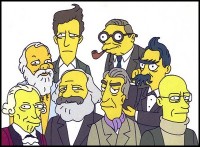If your brownies came out too crispy on top but undercooked in the center, it would make sense to bake the next batch at a lower temperature, for more time or in a different pan—but not to make all three changes at once. Realizing that you can best tell which variable matters by altering only one at a time is a cardinal principle of scientific inquiry.
Since the 1990s studies have shown that children think scientifically—making predictions, carrying out mini experiments, reaching conclusions and revising their initial hypotheses in light of new evidence. But while children can play in a way that lets them ascertain cause and effect, and even though they have a rudimentary sense of probability (eight-month-olds are surprised if you reach into a bowl containing four times as many blue marbles as white ones and randomly scoop out a fistful of white ones), it was not clear whether they have an implicit grasp of a key strategy of experimental science: that by isolating variables and testing each independently, you can gain information.
To see whether children understand this concept, scientists at the Massachusetts Institute of Technology and Stanford University presented 60 four- and five-year-olds with a challenge. The researchers showed the kids that certain plastic beads, when placed individually on top of a special box, made green LED lights flash and music play. Scientists then took two pairs of attached beads, one pair glued together and the other separable, and demonstrated that both pairs activated the machine when laid on the box. That raised the possibility that only one bead in a pair worked. The children were then left alone to play. Would they detach the separable pair and place each bead individually on the machine to see which turned it on?
They did, the scientists reported in September in the journal Cognition. So strong was the kids’ sense that they could only figure out the answer by testing the components of a pair independently that they did something none of the scientists expected: when the pair was glued together, the children held it vertically so that only one bead at a time touched the box. That showed an impressive determination to isolate the causal variables, says Stanford’s Noah Goodman: “They actually designed an experiment to get the information they wanted.” That suggests basic scientific principles help very young children learn about the world.
The growing evidence that children think scientifically presents a conundrum: If even the youngest kids have an intuitive grasp of the scientific method, why does that understanding seem to vanish within a few years? Studies suggest that K–12 students struggle to set up a controlled study and cannot figure out what kind of evidence would support or refute a hypothesis. One reason for our failure to capitalize on this scientific intuition we display as toddlers may be that we are pretty good, as children and adults, at reasoning out puzzles that have something to do with real life but flounder when the puzzle is abstract, Goodman suggests—and it is abstract puzzles that educators tend to use when testing the ability to think scientifically. In addition, as we learn more about the world, our knowledge and beliefs trump our powers of scientific reasoning. The message for educators would seem to be to build on the intuition that children bring to science while doing a better job of making the connection between abstract concepts and real-world puzzles.











